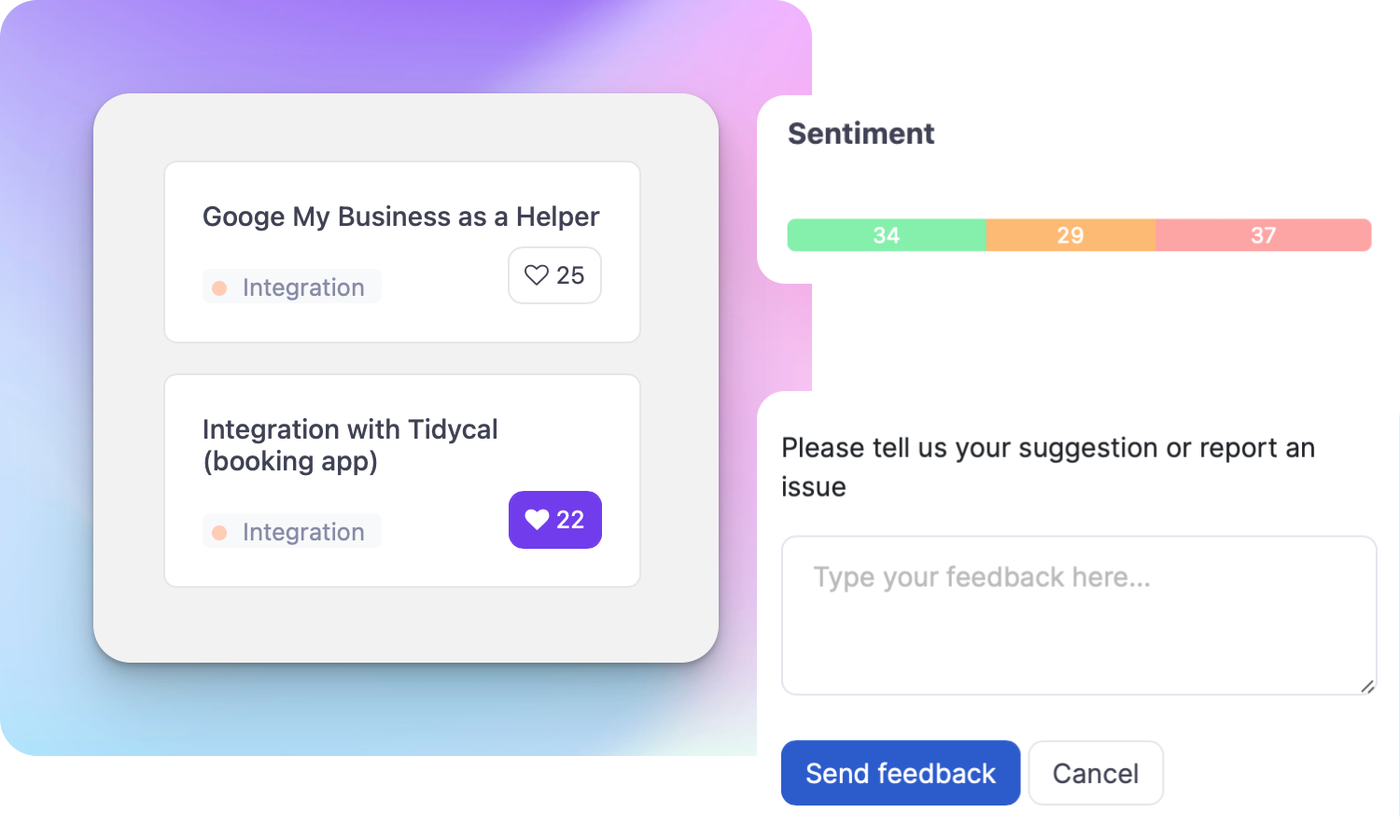What is a User Feedback Analysis?

Ruben Buijs
User Feedback Analysis is the process of collecting, analyzing, and interpreting feedback from users of a SaaS product to gain insights and improve its performance. It involves systematically reviewing and categorizing user feedback to identify patterns, trends, and areas for improvement. This valuable information can help product managers make data-driven decisions and prioritize product enhancements.
Examples
To better understand User Feedback Analysis, let's consider a few examples:
-
Feature Requests: Users often provide feedback on features they would like to see in the product. By analyzing these requests, product managers can identify popular feature demands and prioritize their development accordingly.
-
Bug Reports: Users may report issues or bugs they encounter while using the product. Analyzing these reports can help product managers identify recurring issues and take appropriate actions to fix them, enhancing user experience and satisfaction.
-
User Satisfaction Ratings: User feedback can include ratings or reviews that express satisfaction or dissatisfaction with the product. Analyzing these ratings can provide insights into what users appreciate and what needs improvement.
Importance
User Feedback Analysis is crucial for the success of a SaaS product for several reasons:
-
Product Improvement: By analyzing user feedback, product managers can identify pain points, understand user needs, and make informed decisions to enhance the product's features, functionality, and overall user experience.
-
Customer Satisfaction: Actively listening to user feedback and addressing their concerns can lead to higher customer satisfaction and loyalty. It demonstrates that the product team values user opinions and is committed to delivering a better user experience.
-
Competitive Advantage: Analyzing user feedback allows product managers to stay ahead of the competition. By understanding what users like or dislike about competing products and incorporating those insights, they can create a superior product that meets user expectations.
How to Use User Feedback Analysis
To effectively use User Feedback Analysis, follow these steps:
-
Collect Feedback: Establish channels for users to provide feedback, such as feedback forms, surveys, in-app messaging, or social media. Encourage users to share their thoughts, suggestions, and concerns.
-
Categorize Feedback: Create a system to categorize and organize user feedback. Common categories may include features requests, bug reports, usability issues, and general feedback. This categorization helps identify patterns and trends.
-
Analyze Feedback: Review the collected feedback and identify common themes, recurring issues, and areas of improvement. Look for patterns in user preferences, pain points, and suggestions for new features.
-
Prioritize and Take Action: Prioritize the feedback based on its impact, frequency, and alignment with the product's goals. Use this prioritization to inform product roadmap decisions and allocate resources to address key issues or implement requested features.
-
Communicate and Iterate: Share insights gained from User Feedback Analysis with relevant stakeholders, such as the development team or executive management. Continuously iterate based on user feedback, keeping users informed about implemented changes.
Useful Tips
Consider the following tips to make the most of User Feedback Analysis:
-
Engage in Active Listening: Encourage users to provide feedback by actively seeking their opinions and responding promptly. Engage in conversations to gain deeper insights into their experiences and needs.
-
Use Tools for Analysis: Leverage user feedback analysis tools or software that can help automate the process of collecting, categorizing, and analyzing feedback. These tools can save time and provide more accurate insights.
-
Include Quantitative and Qualitative Analysis: Combine both quantitative data (ratings, surveys) and qualitative data (comments, suggestions) to gain a comprehensive understanding of user feedback. This combination provides a more well-rounded perspective.
-
Look Beyond Individual Feedback: While individual feedback is important, focus on identifying patterns and trends across multiple feedback sources. This broader analysis helps identify common issues and prioritize actions accordingly.
-
Regularly Review and Update: User feedback is an ongoing process, so regularly review and update your analysis. Keep track of changes and trends over time to ensure that your product continues to meet user expectations.
Related Terms
- User Experience (UX)
- Customer Feedback
- Net Promoter Score (NPS)
- Sentiment Analysis
- Usability Testing
- Feature Prioritization
- Product Roadmap
- Customer Support
- Churn Rate
- User Persona
